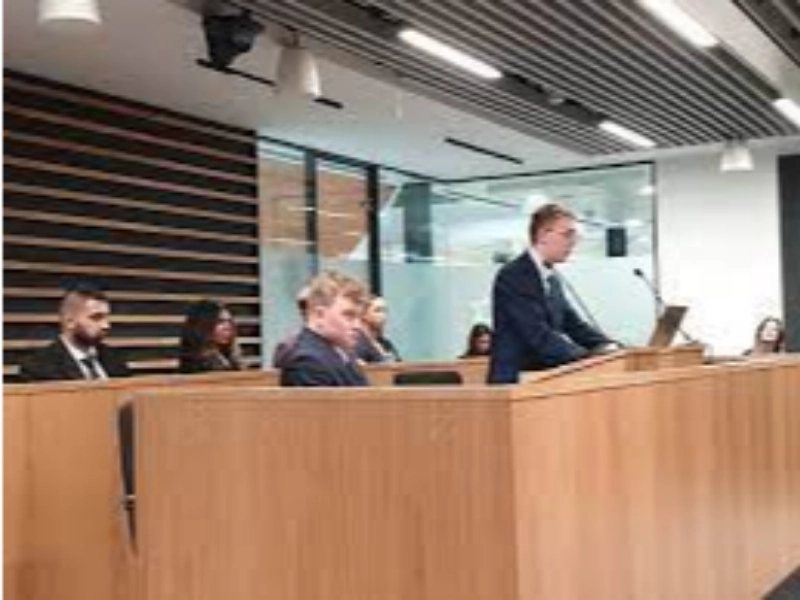Immigration lawyers are dealing with a growing caseload in addition to fresh difficulties. Thankfully, they can enhance customer experiences and expedite procedures with the use of technological technologies. There is a global growth in harmful and degrading narratives about immigration. These stories are frequently used as scapegoats for difficult societal problems and fears. We can anticipate the following developments in immigration law in 2024: 1. Temporary legal statuses give nations an adaptable way to provide protection without having to deal with protracted backlogs or impasses in legislatures.

 Congress created Temporary Protected Status (TPS) in 1990 to enable citizens of nations hit by natural disasters or ongoing armed conflicts to remain and work lawfully in the United States for extended periods of time. The majority of TPS holders have lived in the US for more than 20 years.
When a nation's TPS designation expires, migrants are faced with the tough choice of staying in the United States with their family or returning home, frequently to perilous conditions. They would be exposed to uncertainty and toxic stress without protection against deportation, which could have detrimental effects on their physical and emotional well-being.
By updating recruitment practices, requiring employers to pay all workers the local average or median wage, separating employment-based green cards from dependents (spouses and children who accompany applicants) so they are not counted against the categories' numerical limits, and regulating foreign labor recruiters, Congress can modernize and streamline temporary work visa programs. However, in past CIR incarnations, reaching a political consensus on these concerns has proven difficult.
Congress created Temporary Protected Status (TPS) in 1990 to enable citizens of nations hit by natural disasters or ongoing armed conflicts to remain and work lawfully in the United States for extended periods of time. The majority of TPS holders have lived in the US for more than 20 years.
When a nation's TPS designation expires, migrants are faced with the tough choice of staying in the United States with their family or returning home, frequently to perilous conditions. They would be exposed to uncertainty and toxic stress without protection against deportation, which could have detrimental effects on their physical and emotional well-being.
By updating recruitment practices, requiring employers to pay all workers the local average or median wage, separating employment-based green cards from dependents (spouses and children who accompany applicants) so they are not counted against the categories' numerical limits, and regulating foreign labor recruiters, Congress can modernize and streamline temporary work visa programs. However, in past CIR incarnations, reaching a political consensus on these concerns has proven difficult.
 Due process protections for migrants are regularly violated and racial policy objectives are promoted by immigration-related prosecutions in the United States, which are most frequently tied to improper entry or readmission. At each step of the immigration process, these laws have ripped families apart and encouraged mass incarceration.
Two laws passed in 1996 have a major role in the criminalization of migration. Before these rules, non-citizens with a clean criminal record, positive contributions to and effects on their family, and a history of rehabilitation might be spared from deportation by prosecutors using a unique procedure known as a judicial recommendation against deportation (JRAD).
When JRAD was repealed in 1999, more charges were added to the list of severe felonies, including tax evasion, forgery, and fencing stolen property. These modifications have an effect on the entire immigration system. Deportations rose in tandem with a decline in border apprehensions. Prosecutors can now utilize a feedback loop to justify increased immigration enforcement by concentrating on criminal charges.
Due process protections for migrants are regularly violated and racial policy objectives are promoted by immigration-related prosecutions in the United States, which are most frequently tied to improper entry or readmission. At each step of the immigration process, these laws have ripped families apart and encouraged mass incarceration.
Two laws passed in 1996 have a major role in the criminalization of migration. Before these rules, non-citizens with a clean criminal record, positive contributions to and effects on their family, and a history of rehabilitation might be spared from deportation by prosecutors using a unique procedure known as a judicial recommendation against deportation (JRAD).
When JRAD was repealed in 1999, more charges were added to the list of severe felonies, including tax evasion, forgery, and fencing stolen property. These modifications have an effect on the entire immigration system. Deportations rose in tandem with a decline in border apprehensions. Prosecutors can now utilize a feedback loop to justify increased immigration enforcement by concentrating on criminal charges.
 The United States of America tore families apart at the border in a despicable episode in recent history. As a result, a large number of kids are still missing from their homes, and those who have are having a difficult time getting back together.
Families of immigrants will continue to be affected by family separation even when the acute effects have faded. To stop more harm and give compensation to those impacted, aggressive immigration regulations will be necessary.
The usage of internet-enabled technologies and video teleconferencing for remote hearings in immigration courts has expanded. While many noncitizens benefit from this, some may find it difficult, especially if they live far from immigration courts and if their attorney has little experience handling remote hearings. Hispanic student enrolment in schools declines in communities where local law enforcement agencies sign 287(g) agreements because families are reluctant to relocate there due to concerns about ICE sweeps. Over time, this can cause these communities to become less diverse.
The United States of America tore families apart at the border in a despicable episode in recent history. As a result, a large number of kids are still missing from their homes, and those who have are having a difficult time getting back together.
Families of immigrants will continue to be affected by family separation even when the acute effects have faded. To stop more harm and give compensation to those impacted, aggressive immigration regulations will be necessary.
The usage of internet-enabled technologies and video teleconferencing for remote hearings in immigration courts has expanded. While many noncitizens benefit from this, some may find it difficult, especially if they live far from immigration courts and if their attorney has little experience handling remote hearings. Hispanic student enrolment in schools declines in communities where local law enforcement agencies sign 287(g) agreements because families are reluctant to relocate there due to concerns about ICE sweeps. Over time, this can cause these communities to become less diverse.